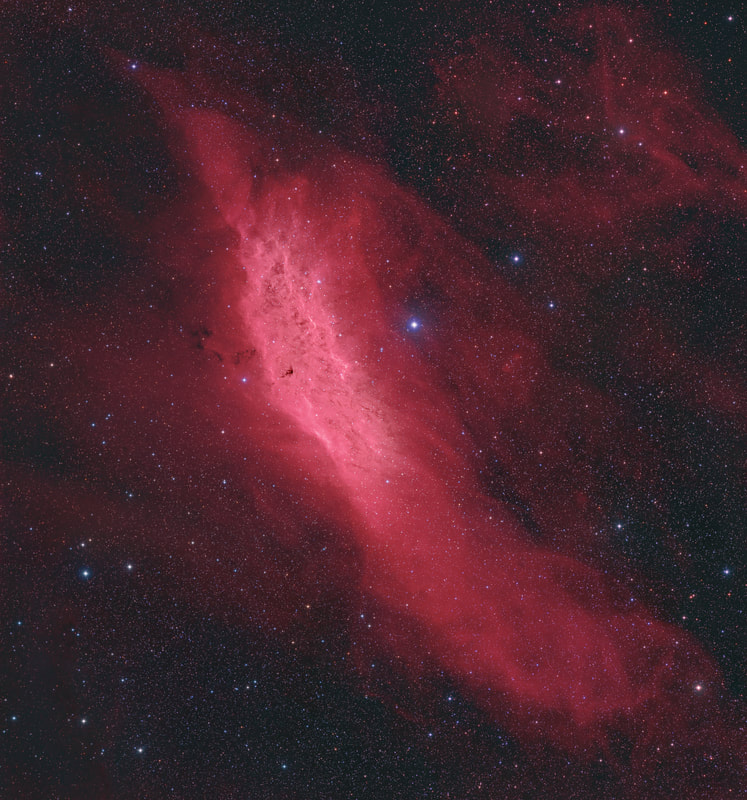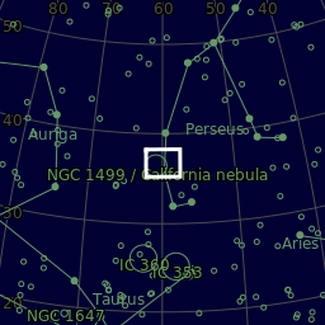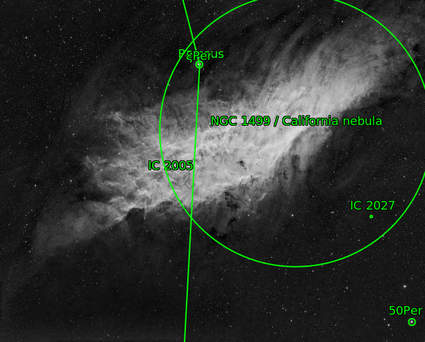NGC1499 - The California nebula
|
The California Nebula (NGC 1499) is an emission nebula located in the constellation Perseus. It is so named because it appears to resemble the outline of the US State of California on long exposure photographs. It lies at about 1,000 light years from Earth.
This is a surprisingly large nebula that needed a considerable mosaic at a short focal length to get it all in. This is a 2x3 mosaic, 6 panes in total. Details: M: Skywatcher EQ8 T: Takahashi FSQ85 0.73x C: QSI683 with Baader RGB filters and Astrodon 3nm Ha filter 24x300s in each RGB filter in each pane. 20x1800s in Ha in each pane This totals 103 hours and 20 minutes of total integration. |




